A cloth made of two, an interview with Sarah Zapata
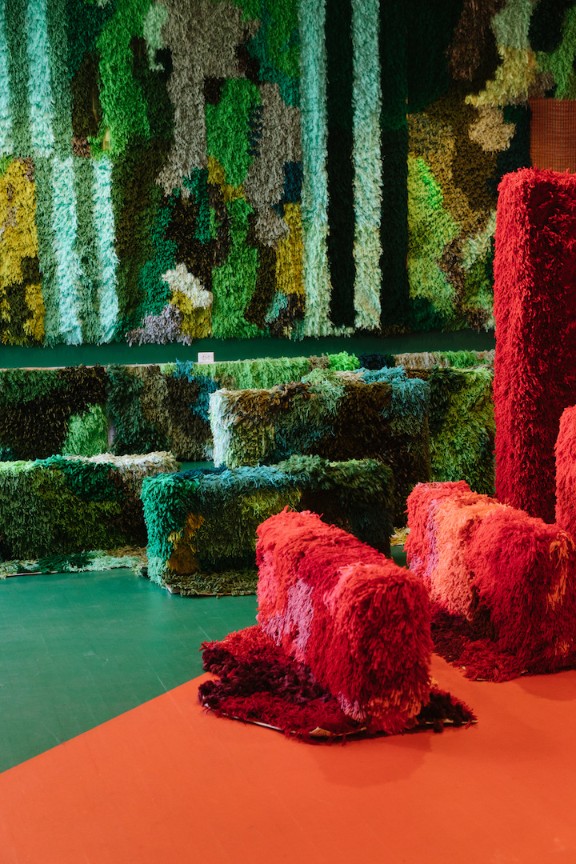
A few days ago I had a video call with Sarah Zapata, a Texas-born textile artist who has lived in NYC for more than a decade. She just got back from a four-month-long residency in Phoenix, a place with close relatives for me. Sarah comments on the particularities of this tan-soiled landscape that hosts the Navajo Nation, a Native American reservation spanning across Arizona, New Mexico and Utah. The occupied land conversation drifts to a wider picture of the current status of the world, the images we’ve witnessed in the past months and how Western values appear futile now that all masks are off. We begin our interview by revisiting Sarah’s origins.
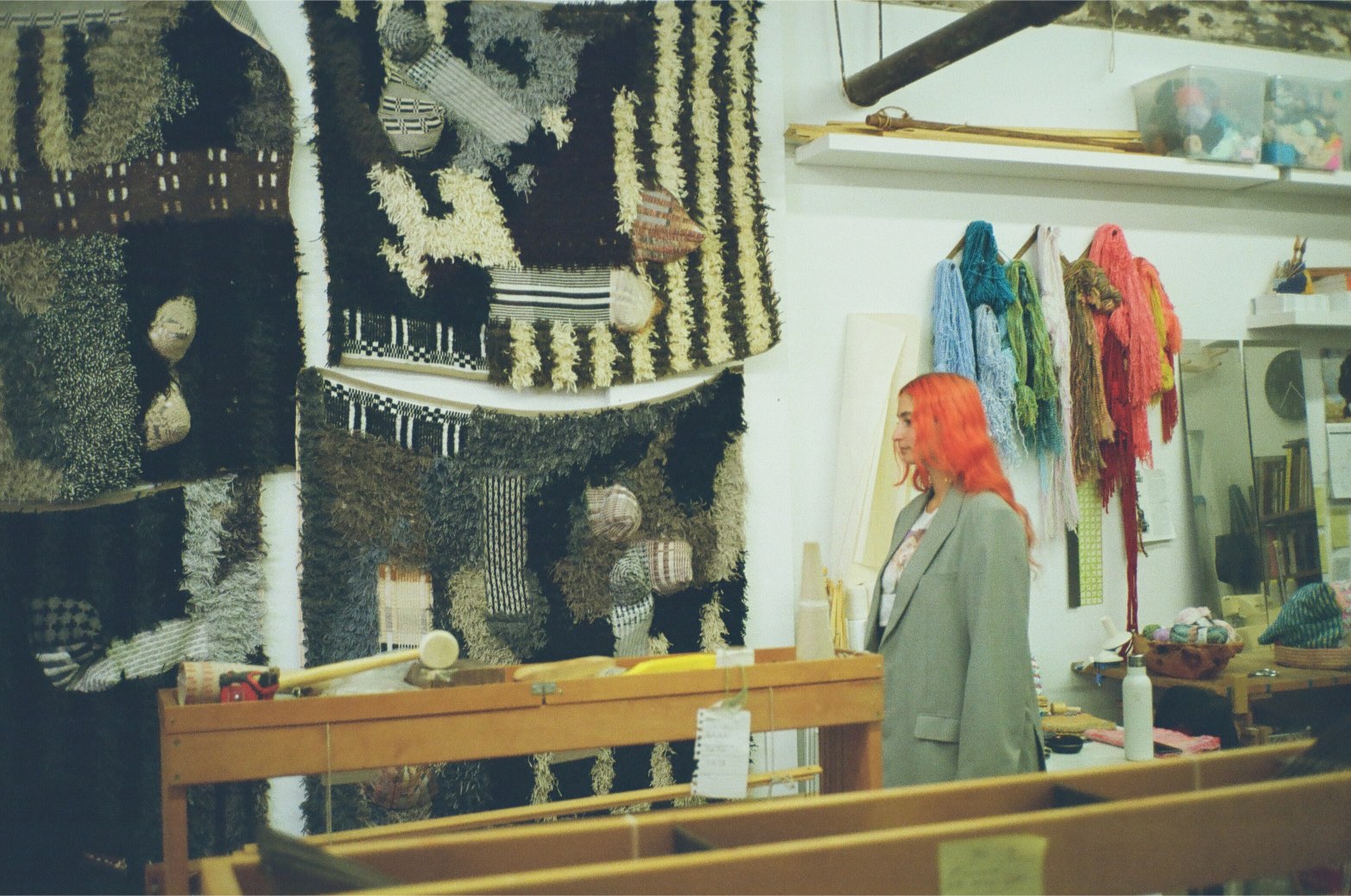
Where did you grow up and what was your upbringing like?
I am originally from Texas, born in Corpus Christi, but really grew up outside of Dallas. My life has been very segmented, my parents are very different from one another and they got divorced. My mother is very white Texas evangelical Christian, and then my father is Peruvian and remarried a Brazilian woman. It was a bit of a struggle to see where I fell between the Texas and South American identities, at the same time never feeling that I was either of them. I think this happens especially in the US, where there are many people who come from immigrants and question how to navigate being an American but also feel a connection back to where your family is from.
Can you tell me a bit of your academic background? Was doing something art related your first choice?
I went to the University of North Texas. I initially started out with fashion design, but that only lasted a semester. I took my first weaving class and loved it, leading me to switch to the fibers program. My mother is an opera-trained singer and piano teacher, and my sister is a classical pianist, so being at the loom felt like being at the piano in this weird way. Weaving is basically just engineering, and my father is an engineer. I felt a connection to these things but on my own terms. After school I moved to New York and I've been here for twelve years now. I’ve been very fortunate to be here this long. It feels truly bizarre to suddenly realize the years I've dedicated to this.
Where do you think this interest in fabrics stemmed from? What propelled the shift of using fabric in one’s body to project it into space?
What initially attracted me to cloth was being a kid. I hated being a kid and how you could control so little in your life. Clothing felt like the one thing where I could control how my body moved through space. I started going to thrift stores in the seventh grade and deconstructing clothes, painting and hot gluing them because I didn't know how to sew. Having that agency of my body felt really incredible, so it seemed natural for me to gravitate towards fashion design. What started out as individuality I quickly understood as a commodification rather, so changing to fibers was a way to think more about the body and space.
How does your work relate to religion, spirituality and the way you place yourself in the world?
Religion, especially evangelical Christianity, is very much rule oriented. Growing up it was tough, going up against a lot of things, not only rules in school, rules in society, and rules that exist within, you know, a greater being. I believe I gravitated towards weaving because it is so rule-based but on a completely different way. I am very much a Capricorn, I like things that make sense and are logical. Weaving really occupies that sensibility in a way that feels healthy. I can operate with it.
There’s a use of architectural references in your work, often of power structures of some sort, religious motives, such as gargoyles, and fortress-like constructions. How do you understand architecture?
I think of architecture in the way it directs a body to move through space. In school I was interested in the architecture of mental institutions, and the work of Thomas Kirkbride, who had envisioned mental asylums to be beautiful spaces. He believed beauty is therapeutic. I was interested in the functionality of beauty and how a space dictates so much of what we feel, how we exist and take up space. Architecture is large, grand. I think it’s important to show up unapologetically within a space.
In opposition to a discipline such as architecture, women's work has been considered to be small-scale and detail oriented, associated with the domestic and functional. How would you like the public to approach your works? Are they meant to be touched?
Before the pandemic I wanted the viewer to be immersed and to activate the work through physical touch. When you’re starting, you’re not thinking about the longevity of anything, because nothing is promised. The first immersive installation I did was right after Trump had gotten elected, so it felt like we needed a space like this for coexistence. It was after the pandemic that I thought, “this is not safe anymore”, and thought about this new paradigm shift and how the work was going to exist now. Soon, I started doing the Gargoyles; those were hung nine feet above the viewer and not meant to be reached. Now, I’ve explored the idea of the forbidden between the work and the audience, which has, in turn, led me to create video works where I’m interacting with the pieces and having that satisfaction of touch.
Has your practice been affected by the different contexts where you have showcased your work?
Absolutely, I've had the privilege of being able to work in many different places in the world. The show at Crisis that was created for Museo MATE was very much about my relationship to Peru. At first I was worried that this work was going to be tied to that time (2020), but we can’t change how these things exist. The show I opened last year in the Kemper Museum in Kansas City was incredible because I was able to work with a Gay and Lesbian Archive of Middle America. The city and the idea of queer world building was part of it. Similarly, in Phoenix, the work is about my time there, being on occupied land and watching a war go on. I had never been somewhere where you're surrounded by reservations; this is a very complex land we don't get to see as much.
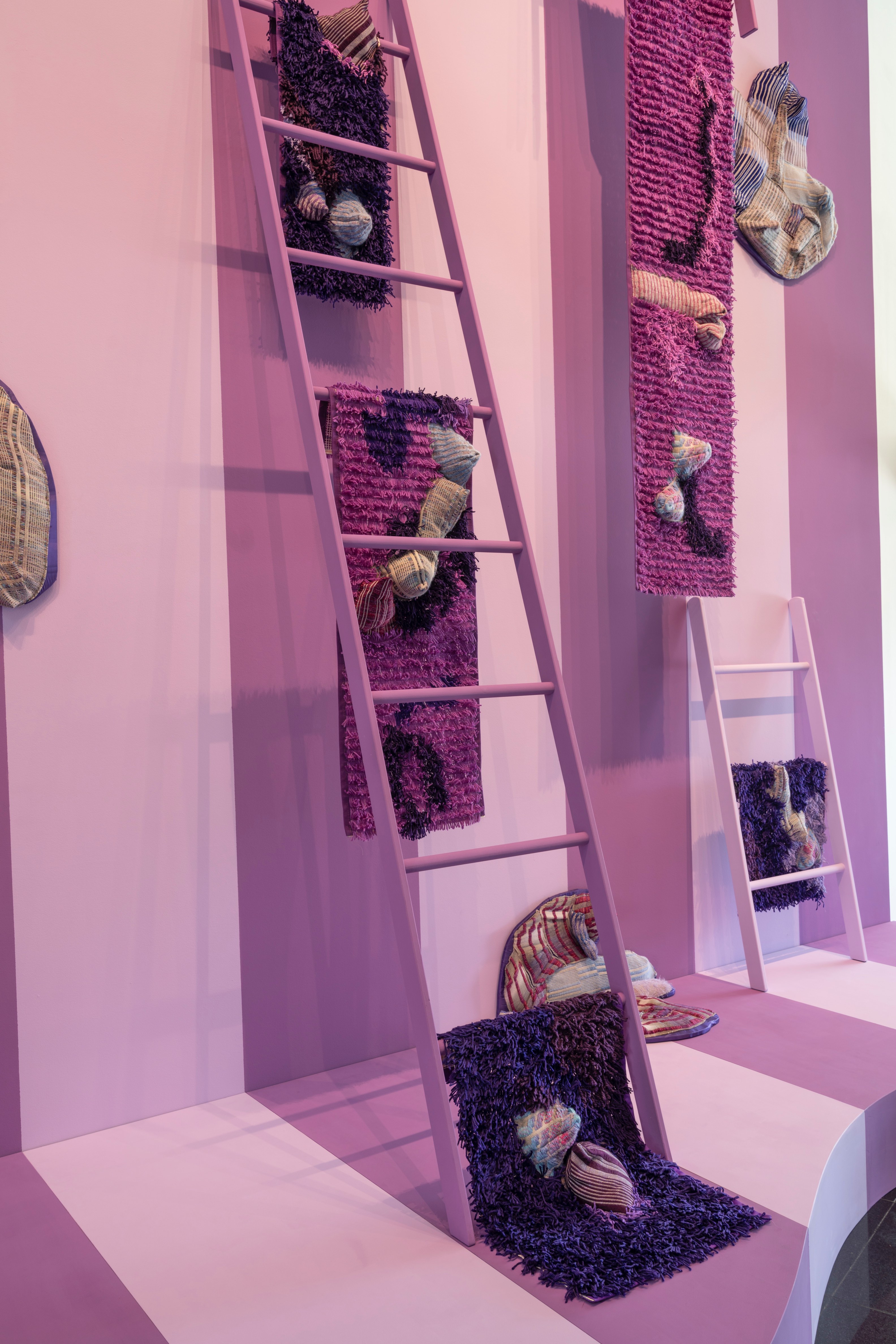
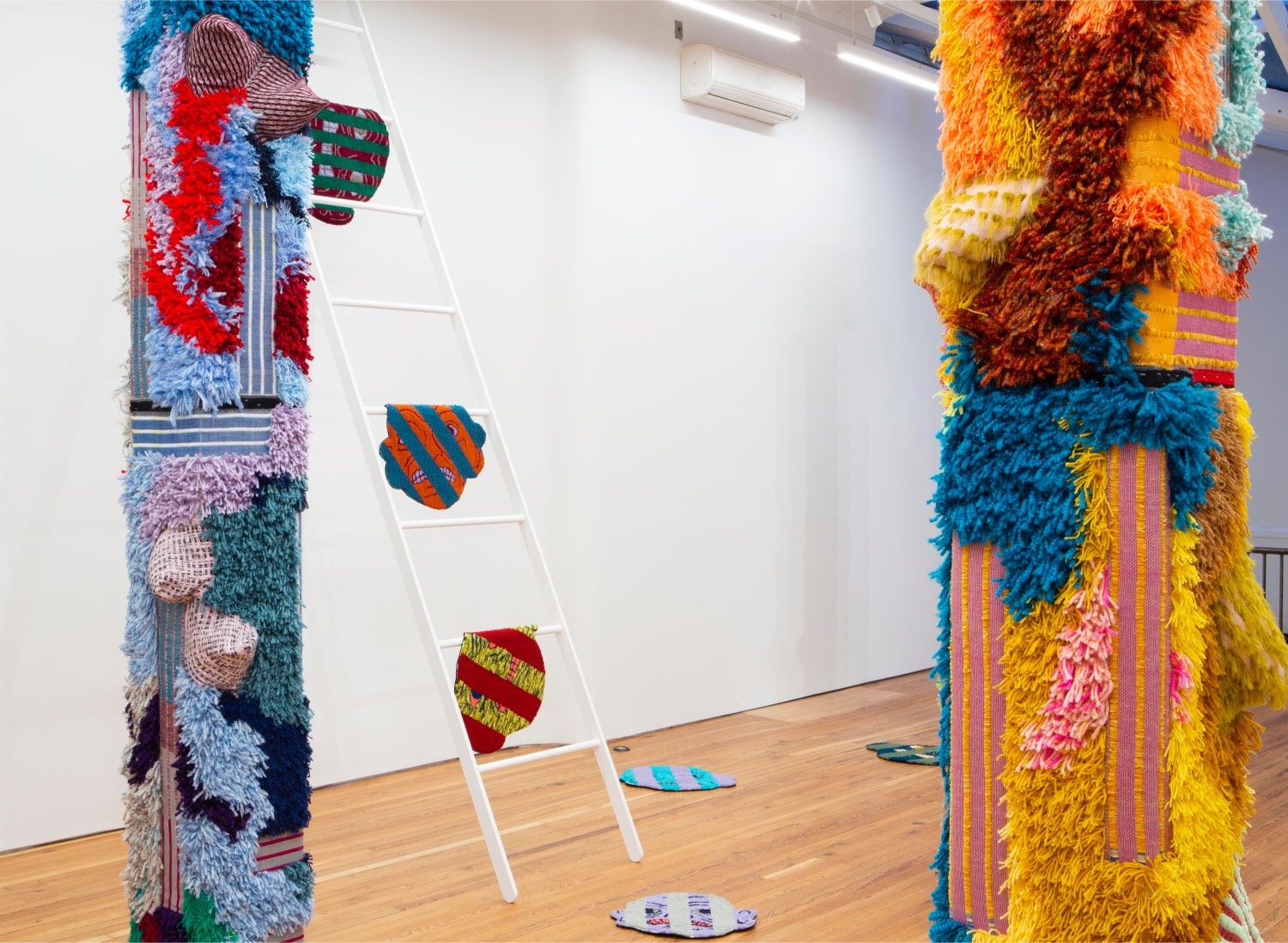
Your studio is in New York. What are the practical aspects of working away from home, given that you operate with heavy-machinery?
For the Lima show they were working on getting me a loom there, that didn’t work out but it was fine, I brought all the hand woven cloth. Phoenix was a long residency and they wanted everything to be made new there. Since the organization is part of Arizona State University, which has a fibers program, we were able to borrow equipment: a loom and an industrial sewing machine. It would be nightmarish to have to ship such equipment. I love the setup that I have here in New York, I feel like I don't need to go on residencies for a little while.
There are lots of stripes in your work, as well as a use of dual monochromatic palettes. Does this relate to a concept of duality?
Definitely, I think duality is always there and color is a great way to present it. Stripes have been something I've been using for a few years to explore power structures and queerness within cloth. Biblical texts talk about how one should not wear a cloth that's made of two. It's considered untrustworthy. From the medieval period onward, people who were on the fringes of society were made to wear stripes, be them prostitutes, poor people and jesters. We actually get the jail stripe from that lineage. And then, we have the American flag. I think stripes honor outcasts, queerness and being in two places at once. There’s this incredible book called The Devil's Cloth about the history of stripes and how they were used for very specific purposes. I started using dual colors for a show in 2019 called A Famine of Hearing. That was the first time I used concentrated colors. I think this duality mirrors in the space what happens in textiles.
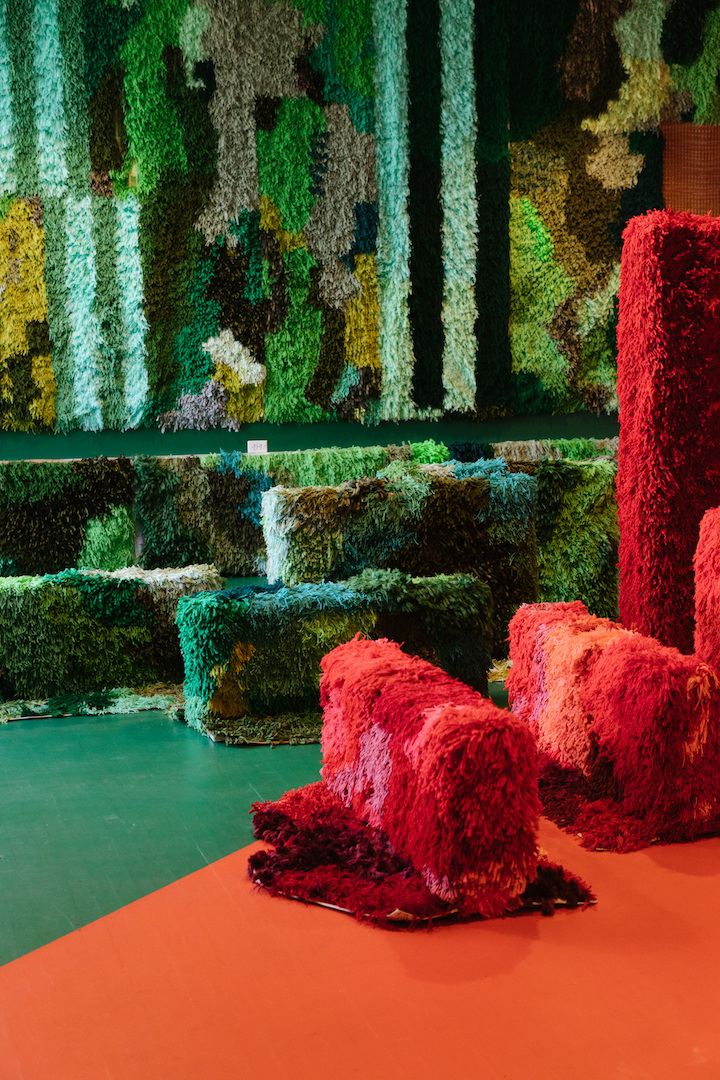
What has been a turning point in your career? A certain illumination you had or a learning process that influenced what you’re doing now?
2020 was a big shift for all of us. I started that year off in Lima when the pandemic hit. Being there to show my work was a lifelong dream. And then all of a sudden that doesn’t happen, but it becomes something else. It wasn’t until the pandemic that I really knew what to do with weaving. I can see that now, I used to be more confused. I’d produce these weaved clothes, but didn’t know what to do with them. I used to think it was so precious, that it had to be preserved. Then I just started cutting it up and sewing it. Now it’s a completely different mindset I have with cloth; I feel much more comfortable exploring its possibilities.
How do you start conceiving a body of work? Do you think about it as a complete installation, or do you imagine individual pieces first?
It always starts with an installation: How it's going to exist and what the different components are going to be. I like going backwards in this way, having a set-in-stone idea of what the installation is, but then improvising with its particularities and understanding that textiles also change. When working on an installation, I'd be thinking about the next one. Whereas right now, I've opened three solo shows in less than a year. So this 2024 I'm trying to be open and not so automated. After a while you know how to make a beautiful object, but you question how it can exist as more.
Where can we see your work next and what areas of it would you like to explore in the future?
I'm about to open the show at the ASU Art Museum in Tempe on February 10th and a two-person show with Sarah Hobbs at MOCA Tucson. Then I'm fortunate to be in a group show at the Barbican, a huge textile show that's going to be opening on February 12th. After that, there are some other group shows where I plan to test some new things. I’ve been thinking about the work I did for Lima. As the situation was complicated, I left Lima on an embassy flight in April 2020, leaving all the work there and not wanting to think or deal with it. But working with Crisis was great, they advised me to add new components to the pieces, so it was a way to work with myself. I had done dyed tufted works, allowing you to see the backing cloth. It was an inside-outside thing that looked like rocks. I’d like to experiment more with that, the in-between of the front and the back of the cloth. I also just started teaching my first semester at Yale, and I’m gaining a lot from going back to basics and working with students who are genuinely excited about textiles. I feel this has invigorated a lot of good practices. Because I feel like you develop a lot of bad habits when you're on your own.
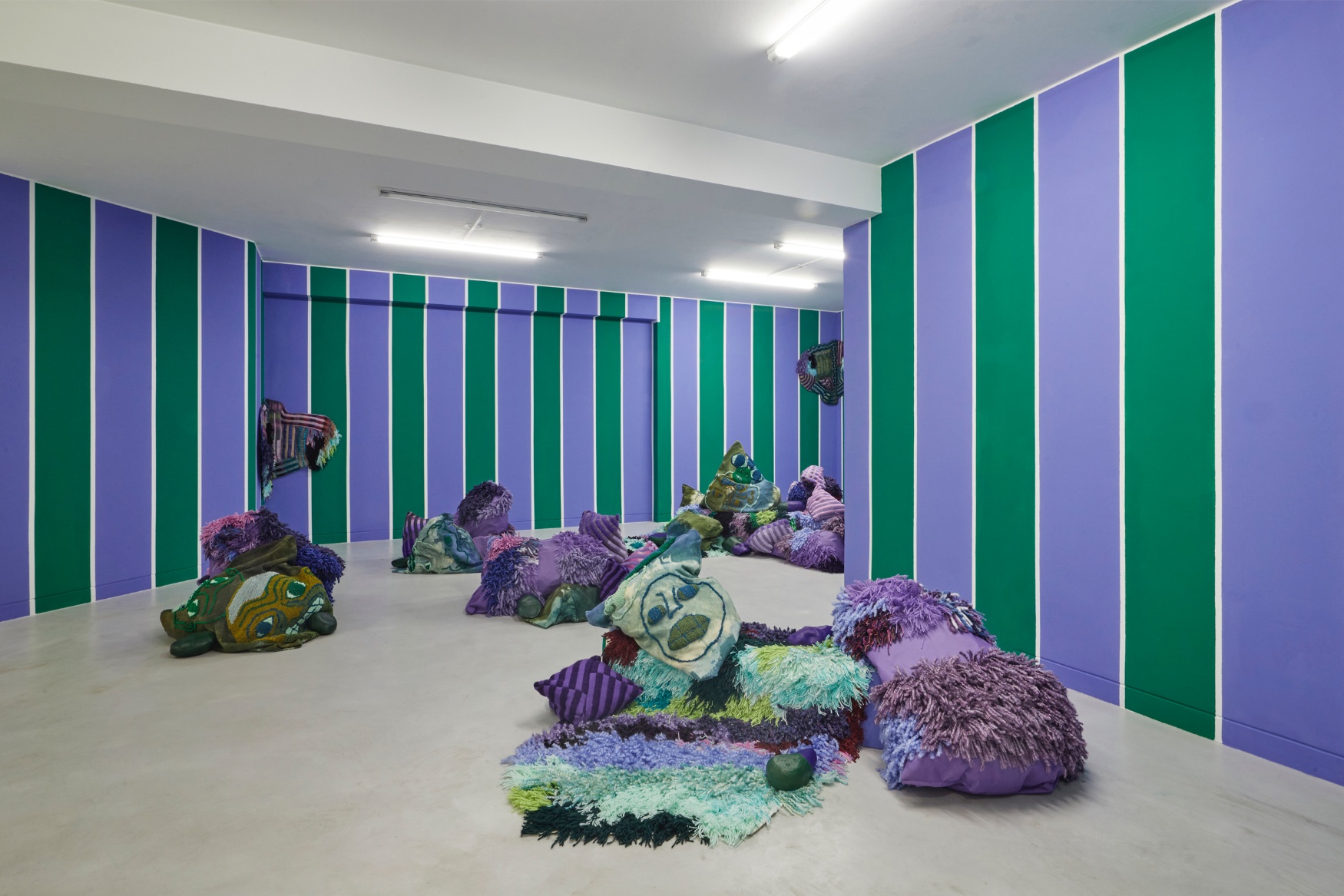
Fabiola Talavera is a Mexican independent curator, writer, cultural producer and archivist based in Mexico City. She is a regular writer of essays, interviews and art reviews for Onda MX and Purple magazine.
All images courtesy of the artist
